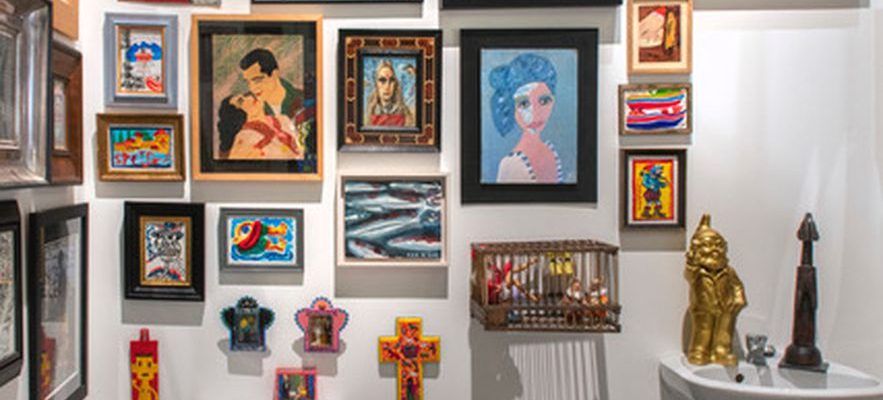Hervé Di Rosa likes to hammer home this: “There is no such thing as modest work, there are only modest collections.” A demonstration is made at the International Museum of Modest Arts (Miam) in Sète, which the artist co-founded with Bernard Belluc twenty-three years ago. Appropriately titled Free!a double exhibition of works and objects resulting from the acquisitions of two couples of collectors is displayed on as many levels.
On the ground floor, 300 pieces were extracted from the overcrowded Montpellier interior of François Bebing and Donald Legere, which numbers 1,800. There we find the compositions of the kingpins of free figuration, Di Rosa, Boisrond, Combas and Blanchard, but also some pearls of contemporary painting by Vincent Bioulès, Manuel Ocampo and Yan Pei-Ming. In the middle are unusual statues and figurines, testifying to an appetite free from all constraints for these works whose improbable association creates surprise at every step. The icing on the cake is a cabinet – in every sense of the word – where a multitude of small paintings, African objects, colorful textiles, colorful relief crosses and even… a garden gnome rub shoulders.
View of the FB/DL collectors’ toilets.
/ © Pierre Schwartz
A compulsive collector for over sixty years, François Bebing was at a good school: when he was a child, his parents devoted one Sunday a month to beauty, carrying him from monuments to churches, from museums to remarkable landscapes. Enough to instill in him the virus of art… or to put him off it forever. This is the first option that will impose itself on the young man. At the age of 15, in 1958, with his salary as a trainee in a hotel in Vichy, he acquired his first work, a small drawing by Dali which he also encountered on this occasion. The exchange is shocking with the fanciful surrealist, as surprised as he is charmed by the young age of his buyer. Since then, Bebing hasn’t stopped, favoring favorites and friendship: “I like to know the artists I collect.” Already present alongside Hervé Di Rosa at the founding of Miam, he has brought together an impressive collection of works, some of which have never been seen before, by the artist.
Upstairs, the impression of entering an Ali Baba’s cave grows even more. The pieces accumulated by Maryvonne and Jean Binder in their apartment in Chalon-sur-Saône rub shoulders in an incredible bric-a-brac around two somewhat forgotten painters of the second generation of surrealism: the disturbing Félix Labisse (1905- 1982), adept of the occult, and the unclassifiable Lucien Coutaud (1904-1977), inventor of eroticomagic. From them, the Binders inherited a fascination with black magic, hence the abundance of Brazilian objects and statuettes found over the decades and placed pell-mell on the four fireplaces in the couple’s apartment. that the exhibition curators, Françoise Adamsbaum and Norbert Duffort, have reconstructed.
At the Binder home, cultures and eras intertwine freely: here a Marsupilami, there a 19th century marble sculpture, candlesticks, fossils, necklaces… Further on, a memento mori vanity in Florence marble, a beautiful bishop’s head burned during the French Revolution and the famous nude mannequin of Labisse which collectors covered with a transparent veil. No doubt, we are in Eros and Thanatos: sex, religion, death.
